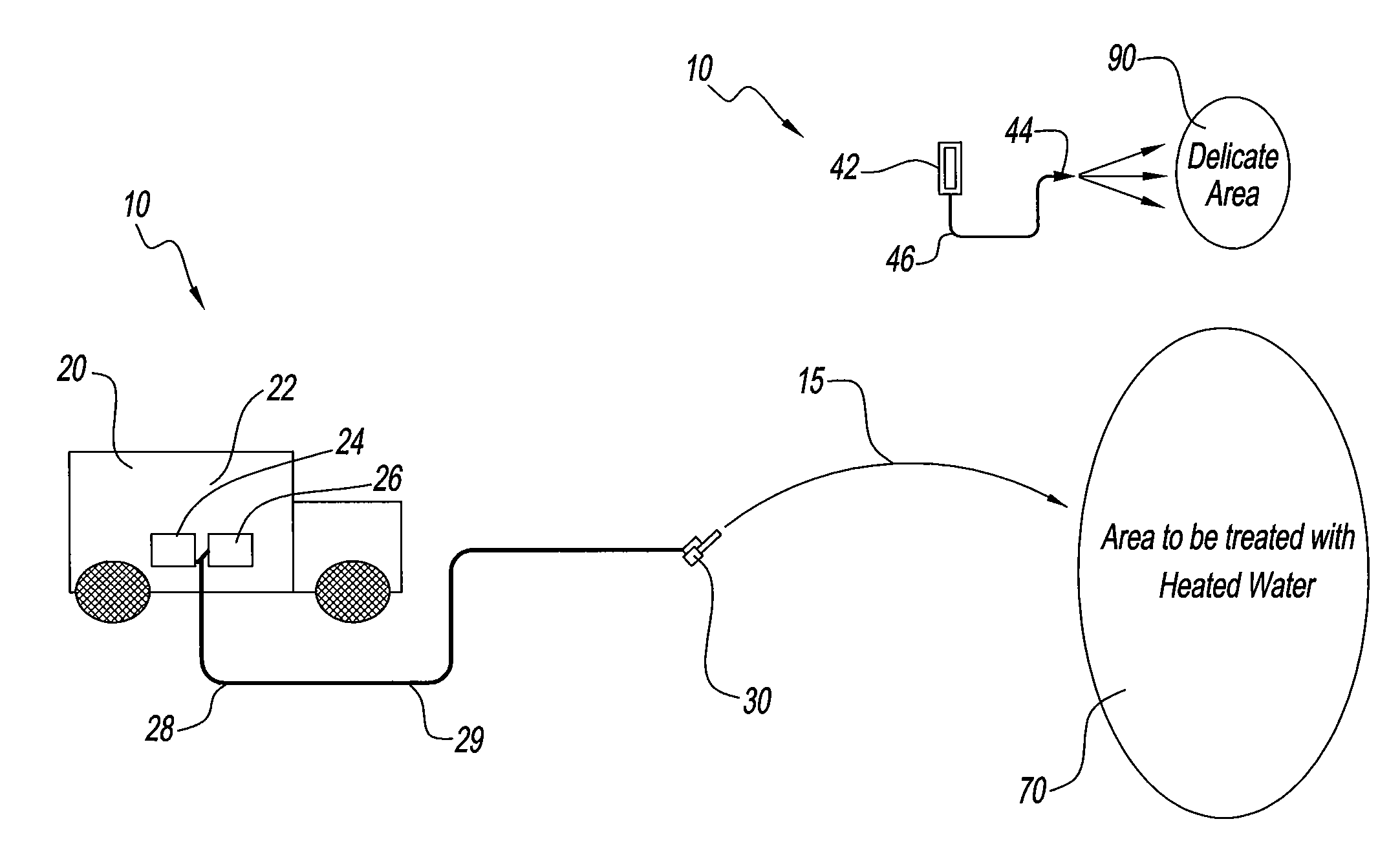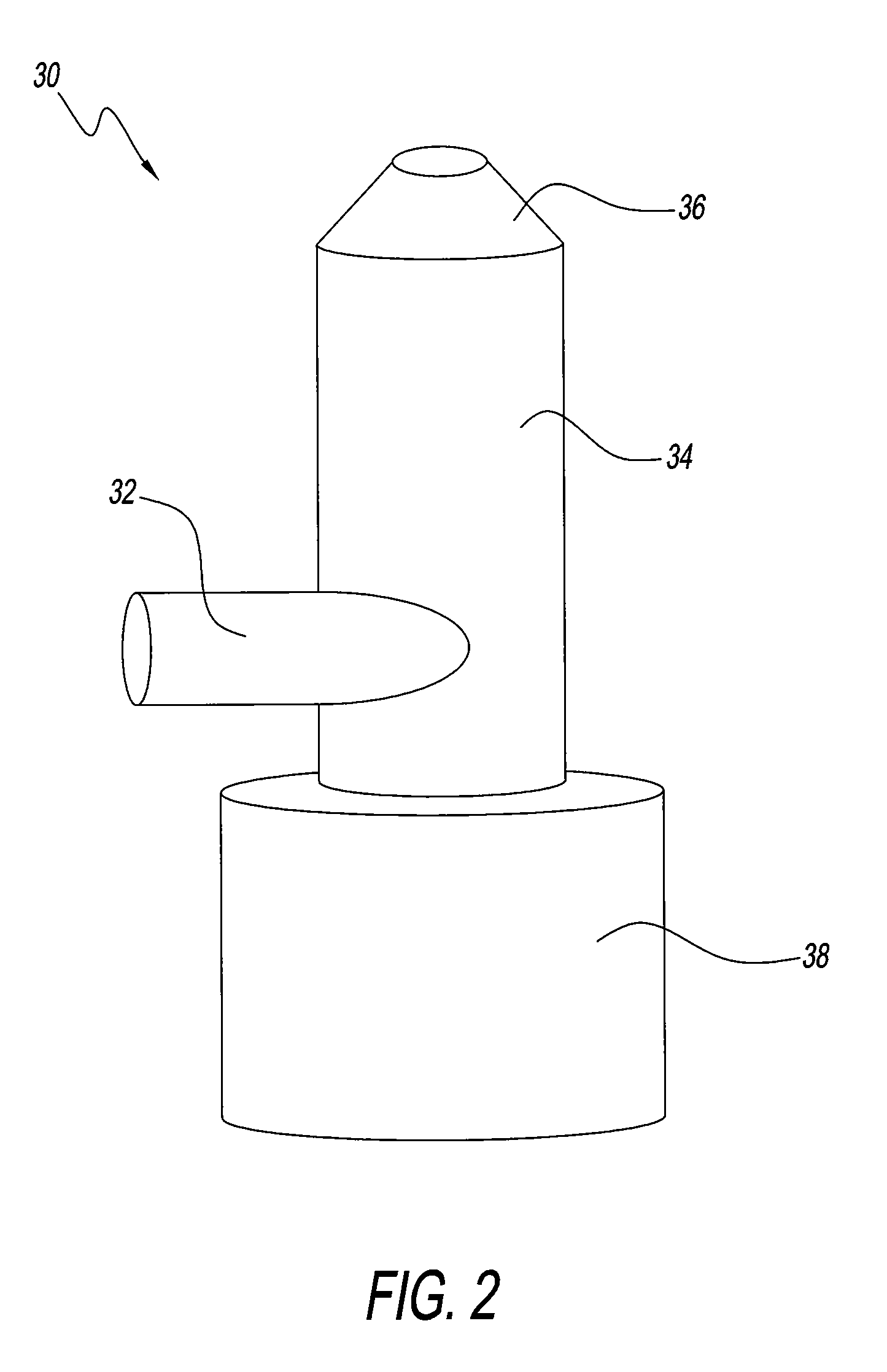Method for killing ticks and other vectors using a heated water system
a technology of heated water and ticks, which is applied in the direction of insect catchers and killers, liquid spraying apparatuses, animal husbandry, etc., can solve the problems of toxicity and cancer risks, most of these chemicals are toxic to bees and should not be applied, and the effect of toxicity and cancer risk remains
- Summary
- Abstract
- Description
- Claims
- Application Information
AI Technical Summary
Benefits of technology
Problems solved by technology
Method used
Image
Examples
Embodiment Construction
[0036]The present disclosure provides a non-chemical, organic method for killing ticks and other vectors using heated water.
[0037]The heated water is the actual killing agent of the ticks and / or other vectors. Water, which is solely in its liquid phase, is the median / mode of transport of the heat energy.
[0038]The method of the present disclosure causes no immediate or residual toxicity to humans, pets, beneficial insects, and wildlife, and so may be employed in both residential and commercial settings. The method offers the eco-friendly benefit of effectively killing / controlling ticks and other vectors without introducing any chemicals into the treated area that were not already present in the area before treatment.
[0039]The present method employs heated liquid water temperatures from about 145° Fahrenheit (° F.) to about 155° F. at the point of impact to kill / control ticks and other vectors. The method is effective without damaging hardy plants, landscape or shrubbery.
[0040]The pre...
PUM
 Login to View More
Login to View More Abstract
Description
Claims
Application Information
 Login to View More
Login to View More - R&D
- Intellectual Property
- Life Sciences
- Materials
- Tech Scout
- Unparalleled Data Quality
- Higher Quality Content
- 60% Fewer Hallucinations
Browse by: Latest US Patents, China's latest patents, Technical Efficacy Thesaurus, Application Domain, Technology Topic, Popular Technical Reports.
© 2025 PatSnap. All rights reserved.Legal|Privacy policy|Modern Slavery Act Transparency Statement|Sitemap|About US| Contact US: help@patsnap.com



